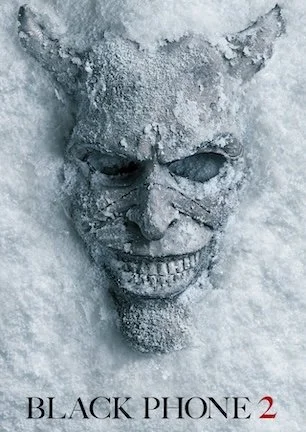Studio: XLrator Media
Director: Christopher MacBride
Writer: Christopher MacBride
Producer: Lee Kim
Stars: Aaron Poole, James Gilbert, Alan C. Peterson, Bruce Clayton
Review Score:
Summary:
Two filmmakers creating a documentary about a conspiracy theorist uncover the existence of a sinister secret society.
Review:
Doomsayers bellyaching about a perceived oversaturation of “found footage” on the horror market have their work cut out for them if they want to convince anyone that “The Conspiracy” should not exist. Writer/director Christopher MacBride’s thriller may use the “found footage” template as a launch pad, but his subject matter is a far different cry from the usual trappings of an exorcism or a haunted asylum.
Aaron (Poole) and Jim (Gilbert) are documentary filmmakers whose latest subject is a sidewalk preaching conspiracy nut known only as “Terrance G.” Resembling a less intimidating Joe Eszterhas, Terrance is entrenched in that underground world of paranoid crackpots who see sunglasses wearing spooks and dark cars with tinted windows following them around every corner. When Terrance comes close to connecting the dots between World War I, Vietnam, 9/11, and every other major event in world history, the scraggly man disappears under suspicious circumstances.
"Terrance G." and Hollywood screenwriter Joe Eszterhas: Separated at birth?
Picking up where Terrance left off, Aaron follows through on the research and traces everything back to a mysterious secret society called The Tarsus Club. He and his filmmaking co-conspirator then decide to turn their conspiracy theorist documentary in a slightly different direction. And after digging into the clandestine organization’s origins and schemes for creating a “New World Order,” the daring duo plots an expose that involves them infiltrating a secret Tarsus Club event.
It is a good thing for Jim and Aaron that the story for their own feature does an about face. Because as an actual documentary, their focus on Terrance and his conspiracy theorist peers plays like a disjointed mishmash of random claptrap about the Illuminati, Bohemian Grove, 9/11 being an inside job, and even the sinking of the Lusitania. Absent is a linking thread that would have made their piece informative or something more intelligent than any other video spouting wild accusations without a grounding in hard facts. That is, until they discover The Tarsus Group.
The story of Terrance G. is a first act smokescreen, after all. The real meat lies in the shadowy details surrounding this little known secret society that actually controls the world. “The Conspiracy” lives or dies according to how well it pulls off the fictional organization that drives its story. And with what he ends up creating, Christopher MacBride could not have achieved a more convincing illusion of frightening authenticity.
Every detail that goes into selling this conspiracy as genuine is right on the money. The very word “Tarsus” is enigmatic as a moniker and the Time Magazine article that spurs the filmmakers’ deeper investigation is deviously well designed. Google no doubt explodes with keyword searches for “Tarsus Club” and “Murray Chance” after every screening of the film.
Is "Mark Tucker" actually Academy Award-winning makeup artist Rick Baker?
Earlier in 2013, I wrote a review for the movie “Shadow People” (review here) that called out those filmmakers for not selling their hoax beyond the fourth wall. “Shadow People” purported to be the true story of radio personality Charlie Crowe Camfield and a deadly encounter with supernatural phenomena. The trouble was, Internet searches for the names of any principle characters cited in the film yielded zero hits. Not a single phony website had been set up in advance to continue confusing audiences about the supposed authenticity after the fact.
The creators behind “The Conspiracy” put much more thought behind their mythology. Someone smartly preplanned methods to perpetuate the hoax after the credits rolled with a handful of sly Wikipedia articles and slick websites designed to make Murray Chance and The Tarsus Club appear real. Anyone who enjoys the movie will appreciate the believable backstory that these efforts add. One of the Wikipedia articles was even created by the handle “Tarsus PR.” When little details like this are considered, major kudos must go to those responsible for contributing the additional layer of mystery. (UPDATE: The Wikipedia articles were removed as of August 11, 2013.)
Of course, the depiction of the Tarsus Club in “The Conspiracy” itself is even more unnerving. The spectacle of what takes place at their secretive gathering and their cryptic ceremony is hypnotically riveting. Unlike the aforementioned paranormal hauntings and exorcisms that typically occupy “found footage,” there are no hard expectations for what these clandestine rituals should look like. And this constant mystery transfixes completely with its behind the curtain peek at how our unknown rulers go about plotting the course of human events.
The suspense is deepened by the spy shop tie clip cameras that record the goings-on. Their limited view obscures the periphery so that a sense of danger always seems to be lurking out of frame. Simple gags such as blurring identities and masking voices take on more ominous tones, too. Something about faceless old white men speaking in garbled baritones is just plain creepy.
Everything about the atmosphere created works to make small moments like a montage of political handshakes seem sinister in the context of revealing forbidden knowledge regarding the custom’s origins. From stem to stern, each facet of “The Conspiracy” is infectious and contagious. And it is not only effective as “found footage,” it is effective as a tense thriller with more relatable roots than its supernatural brethren could ever hope to achieve.
Review Score: 85






If “Match” had been shot in the 1970s, it would have become a cult classic for its skin-crawling weirdness that’s still snicker-worthy in a wicked way.